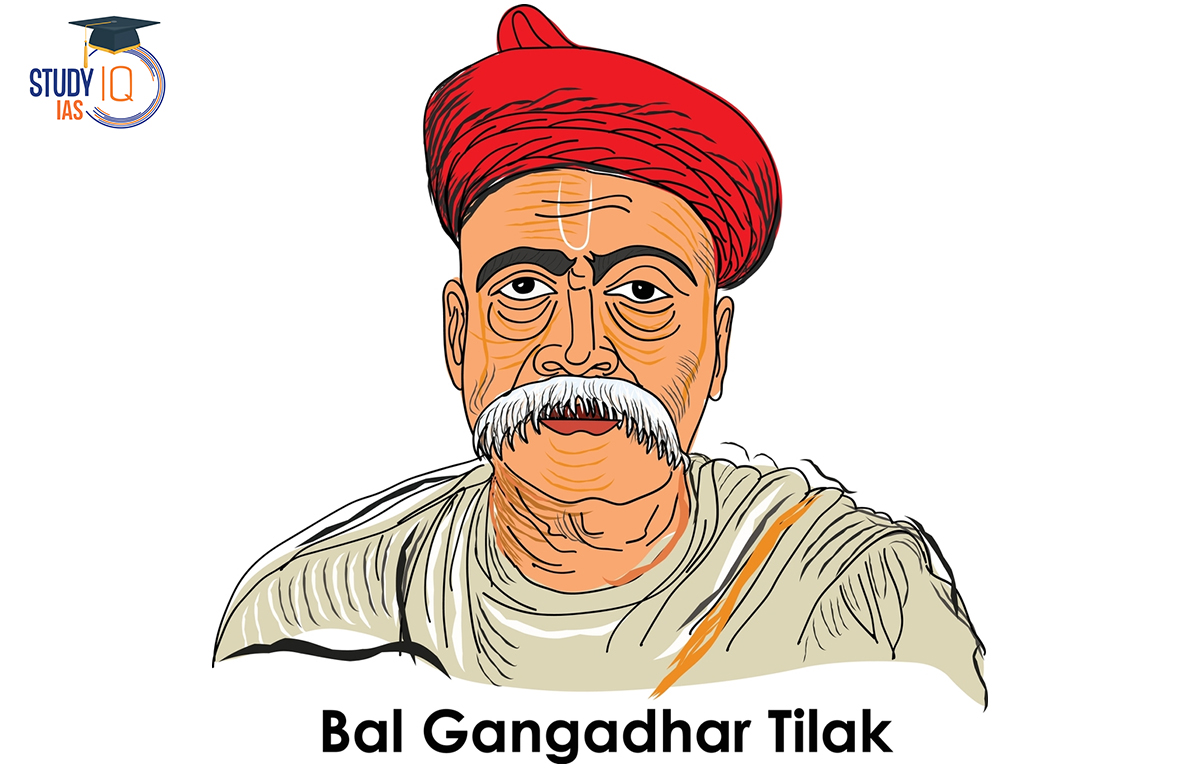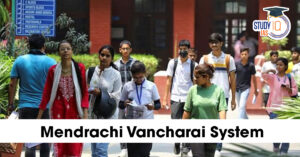Table of Contents
Bal Gangadhar Tilak
Keshav Gangadhar Tilak, often referred to as Bal Gangadhar Tilak, was a journalist, teacher, and activist for Indian freedom. The Indian Independence Movement’s first leader was Bal Gangadhar Tilak. He was one of the three people who made up the Lal Bal Pal trio. He was referred to by British colonial officials as “The Father of Indian Unrest.”
Read about: Bhagat Singh
Bal Gangadhar Tilak Biography
Bal Gangadhar Tilak was born on July 23, in the year 1856. He was born in Ratnagiri district, Bombay State, British India, which is now Maharashtra, India, to a Marathi Hindu Chitpavan Brahmin family. Shri Gangadhar Tilak was Bal Gangadhar Tilak’s father, and Paravti Bai Gangadhar was his mother. Bal Gangadhar Tilak’s ancestral home was in Chikhali. Tilak’s father, Gangadhar Tilak, was a Sanskrit scholar and a schoolteacher who passed away when Tilak was sixteen years old.
Lokmanya Tilak Education
Lokmanya earned an honours Bachelor of Arts in Mathematics from Pune’s Deccan College in 1877. In the midst of the semester, he left his M.A. programme to enrol in the LL.B programme. He received his LL.B from Government Law College in 1879.
Read about: Subhash Chandra Bose
Bal Gangadhar Tilak Family
In the year 1871, Bal Gangadhar Tilak wed Satyabhama Tilak at the tender age of 16. Rambhau Balwant Tilak, Vishwanath Balwant Tilak, and Sridhar Balwant Tilak were three of his sons.
Read about: Mangal Pandey
Lokmanya Tilak Political Career
In the year 1890, Bal Gangadhar Tilak became a member of the Indian National Congress(INC). He quickly began expressing his vehement opposition to the party’s moderate ideas on self-rule. The British, he claimed, could not be defeated by basic constitutional agitation. As a result, he decided to challenge popular Congressman Gopal Krishna Gokhale.
He desired an armed uprising to drive the British out. Bal Gangadhar Tilak enthusiastically backed the Swadeshi (Indigenous) movement and the boycott of British products after Lord Curzon divided Bengal. However, his strategies sparked savage disagreements both within the Indian National Congress (INC) and the movement itself.
Tilak and his supporters were viewed as the extreme wing of the Indian National Congress Party as a result of this basic philosophical disagreement. Lala Lajpat Rai of Punjab and Bipin Chandra Pal of Bengal both backed Tilak’s nationalist endeavours. The Lal-Bal-Pal was the name given to the trio as a whole. The moderate and radical Indian National Congress Party factions engaged in bitter conflict during the party’s 1907 national session. As a result, Congress got divided into two parts.
Read about: Mahatma Gandhi
Lokmanya Tilak History
Bal Gangadhar Tilak battled for Indian freedom from British domination throughout his lengthy political career. Prior to Gandhi, he was the most well-known politician in India. He started a large-scale campaign for independence by focusing on religious and cultural revitalization. Tilak was a social conservative as well as a radical nationalist.
After the Partition of Bengal, Tilak supported the Boycott and Swadeshi movements, which were part of Lord Curzon’s strategy to weaken the nationalist cause. The campaign included a social boycott of any Indian who used foreign items as well as a boycott of foreign products. The Swadeshi movement pushed people to buy goods created close to home. Domestic demand has to step in to fill the hole left by the boycott of foreign goods.
Tilak claimed that the campaigns for swadeshi and boycott were two sides of the same coin. Tilak disagreed with Gopal Krishna Gokhale’s moderate viewpoints and was supported by other Indian nationalists in Bengal and Punjab, including Bipin Chandra Pal.
Read about: Raja Ram Mohan Roy
Bal Gangadhar Tilak All India Home Rule League
In 1915, as the political climate in India was rapidly shifting under the shadow of World War I, Bal Gangadhar Tilak came home. Following the liberation of Bal Gangadhar Tilak, there was unheard-of joy. After that, he went back to politics with a more mature attitude. Bal Gangadhar Tilak, Joseph Baptista, Annie Besant, and Muhammad Ali Jinnah established the All India Home Rule League in 1916 after deciding to reunite with his fellow nationalists. The league had 1400 members by April 1916, and by 1917, there were 32,000.
Read about: Jyotiba Phule
Lokmanya Tilak Social View
Women’s rights and anti-untouchability reforms were two liberal movements in Pune that Bal Gangadhar Tilak fiercely opposed. The foundation of the first Native girl’s high school in Pune in 1885 and its curriculum were strongly opposed by Bal Gangadhar Tilak through the use of his newspapers, the Mahratta and Kesari.
In addition, Bal Gangadhar Tilak was against intercaste unions, particularly those in which a woman from a higher caste wed a man from a lower caste. Although Bal Gangadhar Tilak opposed the age of consent bill, which raised the marriage age for girls from ten to twelve years old, he was able to sign a circular raising the age of marriage for both boys and girls to sixteen and twenty years old, respectively.
Tilak was not a feminist when it comes to gender issues. Hindu women should not be educated in the modern day, he rejected this idea. He was a more devout man who believed that women should stay at home and serve their husbands and children. Despite having earlier spoken out against it at a meeting, Tilak declined to sign a petition in 1918 calling for the end of untouchability
Information About Lokmanya Tilak
Tilak was referred to as the “father of Indian unrest” in the book “Indian Unrest,” written by the English writer Valentine Chirol, because of his staunch nationalist beliefs. In addition to the political movements, he emphasised the necessity for a cultural and religious rebirth. He also promoted the celebration of Shiv Jayanti on the anniversary of Chhatrapati Shivaji, the revered king, and was instrumental in making Ganesh Chaturthi a famous event in Maharashtra.
Read about: Swami Vivekanand
Bal Gangadhar Tilak Social Reform
Bal Gangadhar Tilak, after completing his studies, decided to devote himself to the greater cause of national awakening rather than accepting the lucrative offers of government service. He was a remarkable reformer who spent his entire life fighting for the rights of women to education and empowerment. All of Bal Gangadhar Tilak’s daughters had an education, and he did not marry them until they were older than 16.
Ganesh Chaturthi and Shivaji Jayanti grand celebrations were suggested by Bal Gangadhar Tilak. He believed that by celebrating these occasions, Indians would become more united and patriotic. It is a great shame that Bal Gangadhar Tilak’s participation and support for radicalism did not receive the credit it truly deserved.
Read about: Chandra Shekhar Azad
Bal Gangadhar Tilak Death
Bal Gangadhar Tilak’s health started to decline because of his dissatisfaction with the terrible Jalianwala Bagh massacre incident. Bal Gangadhar Tilak urged the Indians to continue the march despite his poor health. He was anxious to lead the movement, but his health prevented him from doing so. At this stage, Bal Gangadhar Tilak’s diabetes had led to a serious weakening. Midway through July 1920, his sickness grew worse, and on August 1 of that year, he passed very abruptly.
Read about: Sardar Vallabhbhai Patel
Bal Gangadhar Tilak Legacy
Bal Gangadhar Tilak was a social conservative despite having strong Nationalist sentiments. He was a devoted Hindu who wrote extensively about religion and philosophy using Hindu Scriptures. He was one of the most well-known influences of his day, a powerful orator who rallied millions of people to his cause.
Ganesh Chaturthi, which Tilak established, is now regarded as the most important holiday in Maharastra and neighbouring states. Due to his status as an iconic representative of the Indian Freedom fight, Tilak has been profiled in a number of books. The Tilak-founded Marathi newspaper is still published today, however it is now published daily rather than weekly as it was back then.


 Desert Climate, Distribution, Climatic C...
Desert Climate, Distribution, Climatic C...
 Deserts of India Map, Features of Thar D...
Deserts of India Map, Features of Thar D...
 Maharashtra’s Mendrachi Vancharai Syst...
Maharashtra’s Mendrachi Vancharai Syst...





















